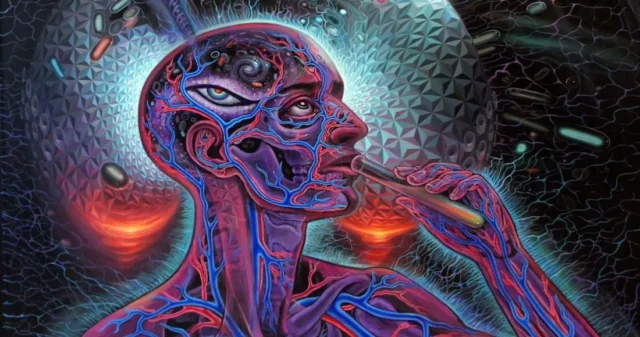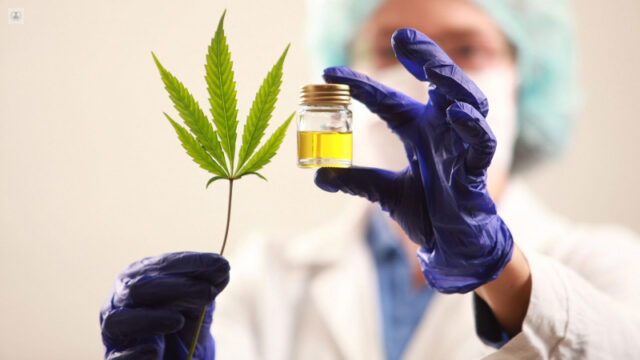Integrative medicine treatment has evolved and grown throughout the world to include entheogens, also called psychedelic medicine. We have been exploring and altering our states of consciousness ever since our first animal friends found a psychedelic mushroom mound, saw the goddess of the cosmos, and shared their discovery with us.
Plants and mushrooms are often used by peoples in many cultures in group rituals to alter consciousness, to commune with the gods, or to stay alert while embarking on long hunting expeditions; or used individually to stimulate visions, sleep, treat pain and wounds. Entheogen refers to “God within us,” those plant substances that, when ingested, give one a divine experience. In the past commonly known as hallucinogens or psychedelics.
Many drugs are derived from these plants whose chemical components are currently extracted, synthesized and concentrated in laboratories. In addition to their medical uses, psychoactive plants and mushrooms are also used recreationally and ritually. They are increasingly being studied and applied in the clinical setting for a variety of symptoms including depression, despair, anxiety, and “loss of spirit.”
Plants and fungi and their chemical derivatives are the study subjects of general empirical science, indigenous sciences, and biomedical clinical trials aimed at identifying their application for the treatment of depression, anxiety, addiction, insomnia; and as a catalyst for spiritual and post-traumatic growth. It is at this intersection that a treatment can be explored to understand psychoactive states and balances.
Its roots are with the indigenous peoples
Historically, indigenous and traditional societies use psychoactive plants in the context of community-based ritual. Under these conditions, the community and ritual provide the setting to assist the initiation and healing process experienced by the participating user. Industrialized societies have lost many of these rituals and those that remain, even when religious, rarely include the use of plants used to commune with God, like the practices that were central to Christian and pagan worship.
The incipient renaissance of psychedelic medicine opens the door for a comprehensive understanding of health in which the body is treated as a hologram of the soul
Health is a state that has to do with a balance between all the elements of our body, as if they were a whole, a unit that we could consider “sacred”, a hologram in which each part contains and affects all the other parts. . The level of the sacred refers us to the often formulated concept of “my body is my temple” and by extension to the notion that the body is sacred, like a temple, because it is a habitat —or interface— of the spirit or of the spiritual. , is, we could say, the hologram of the soul.
If we consider that the body and the spirit (or the mind) are inseparable condensations of the same entity, then we must reformulate our definition of health. “Man has no Body distinct from his Soul; since what is called Body is a portion of the Soul discerned by the five Senses”, wrote the renowned English poet William Blake. An important crack opens in this perception —the bright line in the abyss— for “psychedelic drugs” as agents and facilitators of body-mind-spirit health. For a moment things are reversed and drugs are medicines.
Psychedelic
The meaning of the word “psychedelic” can be understood as “that which reveals or makes manifest the mind”. But let us also remember that the prefix psi originally intertwines the mind with the soul (Psyche is the Greek goddess of the soul), hence it can have another meaning: “that which makes the soul manifest”. An integral medicine needs to make the mind-soul emerge from the deep shadow of the body of history, to treat it as part of the same organic process, if we really want to heal (and wake up from the nightmare).
This may be the key to psychedelic substances: they reveal, in a sometimes violent way, the spiritual body or energetic body, a body that many times frightens us to see (“every angel is terrible”) and that in that panic, which it violates the established reality, it can fragment us even more if we do not have the “soul doctors” or if we ourselves do not know how to operate and we move through the jungle without being able to see the branches (the souls).
In this sense, psychedelic medicine must merge with psychology and make the shadow of our person visible, face it, accept it and possibly sublimate it. Jung said that until we make the unconscious conscious, we live under its tyranny, unable to read the symbols of our own writing. Psychedelic substances —between magic and maieutics— are an ancient heritage of biotechnology especially suitable for revealing the unconscious, bringing the invisible (because it is blocked), monsters and angels, to the surface. And so we have the sword and we face the dragon of our own mythology.

God within
To differentiate from the pejorative classification of drugs such as heroin or crack, some people have begun to call psychedelic substances “entheogens” (which carry God within, a continuation of teonanacatl), empathogens (in the case of substances such as MDMA) and even holotropic (which act on the entire organism, following the transpersonal therapy of the same name by the brilliant psychologist Stan Grof). They may even be nature’s most powerful medicines, in the sense that they treat the human organism holistically and bring it closer to a holistic understanding of itself: medicines that teach you to be your own doctor (because you can feel your spirit).
Two Entheogens that promise to revolutionize the concept of comprehensive health:
Psilocybin (Mushrooms)
Perhaps because hallucinogenic mushrooms are probably the first integral medicine in the history of humanity, used to heal in numerous shamanic cultures, Western science is currently beginning to pay attention to the medicinal values of psilocybin, the active principle of many of the hallucinogenic mushrooms, part of the royal psychedelic family of tryptamines.
Psilocybin is already being used in pilot programs to treat terminally ill patients. Dr. Charles Grob of the Harbor-UCLA Medical Center in Los Angeles has evidence that in all cases in which this psychedelic has been administered to people with cancer, their anxiety has decreased, thus improving quality of life and mood, and these benefits have been sustained for several months.
“Under the influence of hallucinogens, individuals transcend their primary identification with their body and experience ego-free states before the time of their current physical state and return with a new perspective and a deep acceptance of the constant of life: change.” says Dr. Grob.
The first UK study in decades with psilocybin suggests that the mushrooms could serve as effective antidepressants, without many of the side effects that these drugs exhibit, such as loss of sexual drive.
Psilocybin—like all tryptamines—has a chemical structure similar to that of serotonin, the mood-regulating hormone, and makes alloys with serotonin receptors on neurons. This opens the door for it as a natural substitute for antidepressants in psychotherapy, since the serotonin system in the nerves is what existing antidepressants work on. If pharmaceuticals would let it, depressed people could take a psilocybin pill every day and see the world a little sunnier.
Even more significant is the fact that the effects of psilocybin in the treatment of depression could be long-term, as psilocybin increases the expression of genes and proteins associated with nerve growth. “We think that the antidepressant effects of psilocybin could be due to a possible increase in factors that activate neuroplasticity in the long term,” said Franz Vollenweider of the Zurich Psychiatric Hospital, who studies the effects of psychedelics.
Ayahuasca
Perhaps the most promising of all psychedelic medicines is ayahuasca. Originally, this concoction exhibits a medicinal intention and lineage as it is a combination of two plants, which allows the psychedelic alkaloid (DMT) to be orally active. In other words, ayahuasca is the result of pharmacological research by non-ordinary means by the shamans of the Amazon —legend says that it was the jaguar who taught how to make ayahuasca— and combines medicinal plants with visionary plants in its preparation. The preparations vary according to the “ayahuasquero”, but an MAOI inhibitor is always included, traditionally the liana banisteriopsis caapi (“the vine of spirits”) and a plant that contains DMT (or 5-MeO DMT) such as chacruna (Psychhotria viridis).
At first it was believed that the active substance of the banisteriopsis caapi liana was telepathin, following the reports of traditional ayahuasca users, who reported collective visions of jeweled jaguars, snakes and birds; the ability to see future events; and the ability to establish telepathic contact with other members of the tribe, with spirits, plants and animals. It is now known that telepatin occurs in different plants and is actually known as harmine.
Evidence suggests that ayahuasca and other psychedelics that occur naturally in the human metabolism (ayahuasca is analogous to serotonin) have a fascinating ability to materialize the Logos, so that the word is not heard but grasped.
Dr. Jeromy Narby, in his book The Cosmic Serpent, hypothesizes that Amazon shamans are capable of contacting DNA at the molecular level and extract information, which they use to heal.
In this way they have managed to develop complex medicines such as curare and perhaps ayahuasca itself, in the biophotonic whisper of DNA-Axis Mundi: “My research has led me to formulate the following hypothesis: In their visions, shamans take their consciousness down to the molecular level and gain related access to DNA, which they call “animated essences” or “spirits.” This is where they see double helixes, spiral sclera, and chromosome shapes. This is how shamanic cultures have known for millennia that the vital principle is the same for all living beings and is in the form of two intertwined serpents (a vine, a rope, a ladder).”
Although the DMT (dimethyltryptamine) contained in ayahuasca concoctions is prohibited, ayahuasca is legal within a religious context in countries like Brazil.
There are numerous investigations on the potential of ayahuasca in the treatment of addictions (“poison is the antidote”, the roles are reversed): A tryptamine, like mushrooms, one of the active substances in ayahuasca is molecularly similar to serotonin and in this sense has antidepressant potential (functioning as a neurotransmitter).
Terence Mckenna said that the difference between some schizophrenics and some shamans is that schizophrenics are medicated and isolated by society (that and that shamans know how to return from their psychonautical excursions). Perhaps the poison is the antidote.

Curing cancer
Par excellence, ayahuasca is intergral psychedelic medicine: there are several reports about people who claim to have been cured of cancer through shamanic medicine that uses ayahuasca. Dr. Donald Topper of the University of Hawaii and founder of the Drug Policy Forum of Hawaii wrote an account of his experience with ayahuasca and cancer for the organization MAPS. Topper had been diagnosed with colorectal cancer; in 1996 he was told that the cancer had spread to his liver. Topper began taking ayahuasca with members of Santo Diame and later with an apprentice shaman. After several sessions, he had an exam and an oncologist revealed that the cancer antigens had disappeared. Topper attributed his recovery to ayahuasca.
The Alternet site reports on the extraordinary case of a woman who claims to have had cancer, which was removed by a shaman during an ayahuasca session. “During the healing, black smoke was extracted from my chest, where the cancer was, I was able to see inside. My cells were alive, pulsing with the rhythm of the cosmos,” says this woman.
There are numerous personal stories on the Internet about people who claim to have been cured of cancer in ayahuasca sessions and of healers who claim to cure even AIDS with the door that this plant opens. Obviously these accounts do not have scientific validity, but they do invite further investigation.
Ayahuasca healing opens the door to an alternative dimension of medicine, symbolic and energetic healing. Shamans sometimes describe that ayahuasca reveals certain information which they use in conjunction with their botanical knowledge to heal, but sometimes it is the same visions of ayahuasca that heal, either through a symbolic process of integration psychic or showing the energetic body and in its visibility the possibility of moving the points and filaments of this body to restore the order of health.
Ayahuasca, like other entheogens, frees the unconscious and makes it emerge into conscious perception; symbols are the anatomical units of the unconscious, and in this sense operating symbolically is operating on the anatomy of the unconscious: the spirit. In this way, too, one works not on the symptoms, but on the causes of a disease (the mental or emotional process that somatized them). Is it possible to speak then of a symbolic medicine that modifies or readjusts the structure of the soul body? If we consider the possibility that our basic structure is language, in the computing depth of our cells, in the code of “letters” of our genetics, then it is not so far-fetched to think that a language -sounds, words, images- can heal us (reprogram us).

